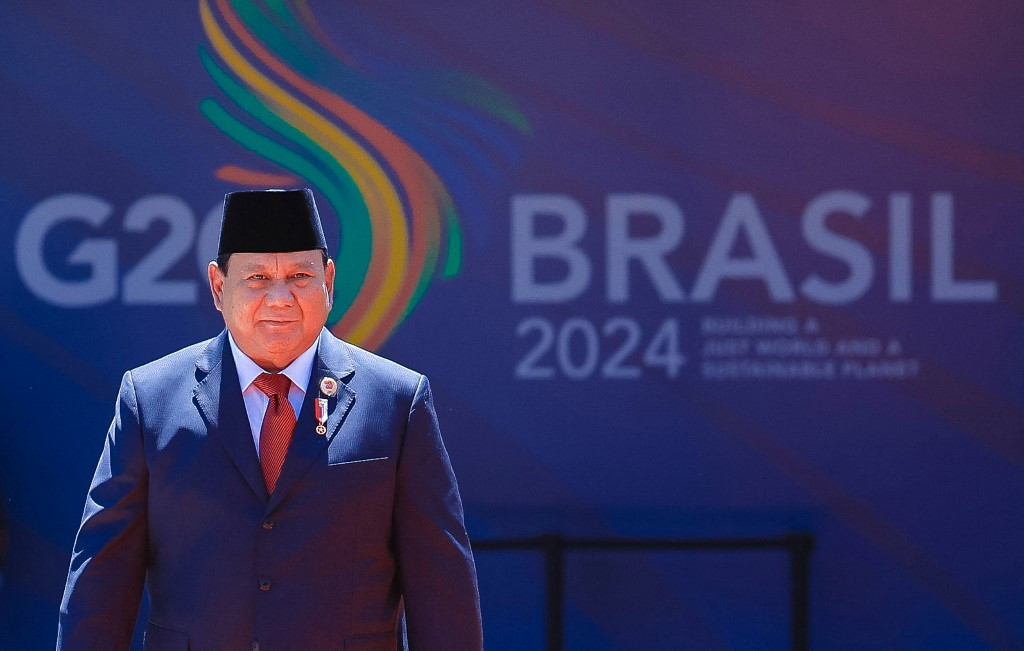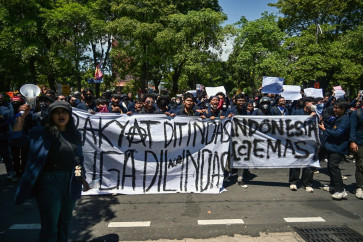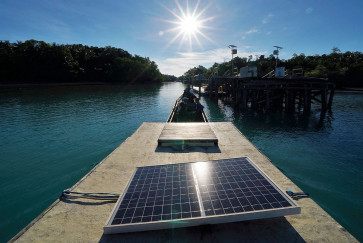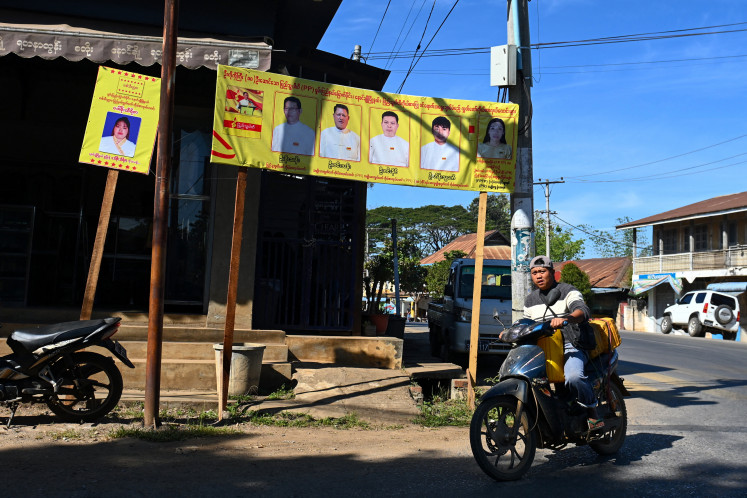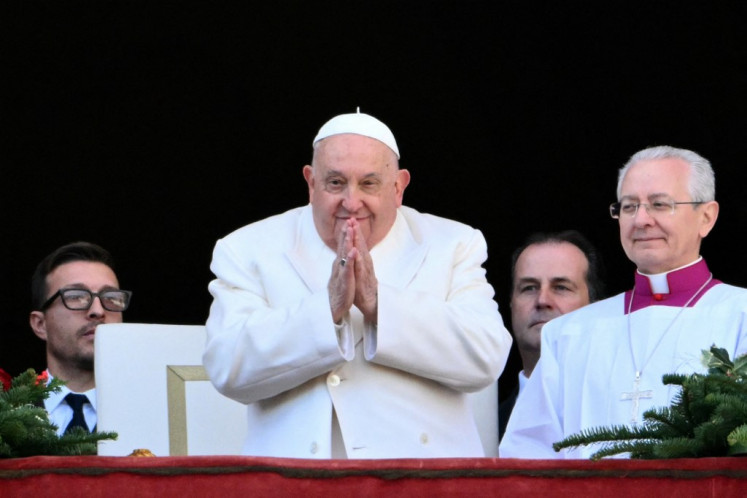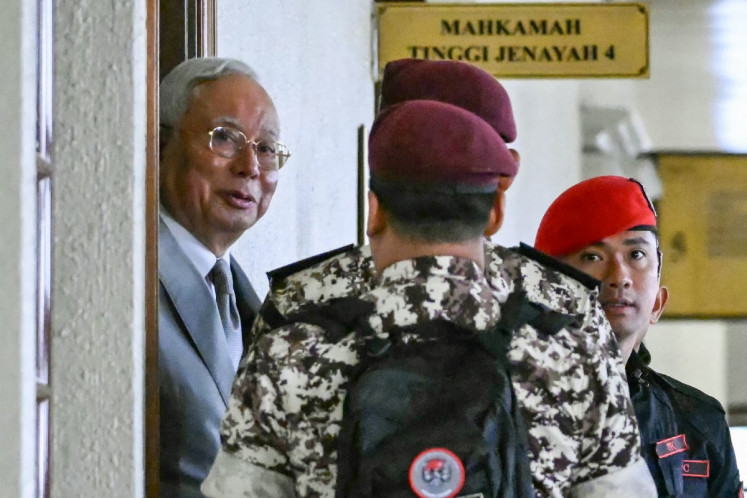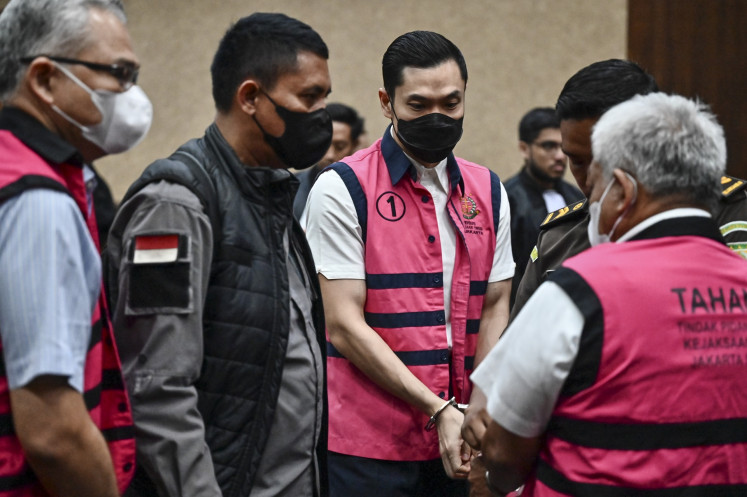Popular Reads
Top Results
Can't find what you're looking for?
View all search resultsPopular Reads
Top Results
Can't find what you're looking for?
View all search resultsThe $300b climate joke
Rich countries, with a few individual exceptions, never intended to make good on their past promises.
Change text size
Gift Premium Articles
to Anyone

Some delegates at the COP29 climate conference have scoffed at the US$300 billion annual fund pledged to developing countries to finance losses and damages from climate change while making the transition to cleaner and renewable energy. Nobody is laughing, but they are right, the sum is laughable.
No one had expected that rich countries, which contribute the most to climate change, would come up with anywhere near the $1.5 trillion that developing countries, who suffer the most, need to limit the rise in the average global temperature. Last week’s United Nations climate conference in Azerbaijan was nevertheless hailed by many as a success after long and tough negotiations. The $300 billion fund is still three times larger than the previous commitment.
What is worse is that rich countries, with a few individual exceptions, never intended to make good on their past promises, which raises doubts of their seriousness in providing the higher funding they have now pledged.
And with climate skeptics taking over the White House in January, we can rightly question if the United States, as the biggest polluting nation of all, will ever own up to its climate responsibility. We should turn elsewhere for any leadership on climate change.
In the meantime, the time bomb is ticking as we head for a climate catastrophe. Most experts agree that 2035 is the critical year for the world to arrest the rise in the average global temperature to less than 1.5 degrees Celsius. Miss the deadline, and global warming will spin out of control. That is just over 10 years from now, presumably with 10 more COP conferences.
Getting all 195 countries to come to an agreement is always difficult, but it should not be impossible given the gravity of the problem.
Putting aside the funding issue, the world has made progress in other areas. These include nations making a bolder commitment to phasing out fossil fuels and to replacing them with clean and renewable energy.
There was progress made in Baku regarding the carbon trading market mechanism, one of the commercial ways to raise funds. But do not expect too much from the private sector. The market mechanism does not create equality and fairness. At the end of the day, it is public funding from governments that should contributes the most.
Indonesia’s delegation to COP29, led by businessman Hashim Djojohadikusumo, drew criticism at home when his speech focused too much on carbon trading and climate financing, but skirted the question of Indonesia’s commitment to curtailing global warming.
Environmental activists became even more suspicious when Indonesia postponed submitting the latest report on nationally determined contributions (NDCs), which stipulates the government’s commitment to reducing carbon emissions. In 2022, Indonesia pledged to cut emissions by 31.89 percent, which could then increase to 43.2 percent with international support. The government said that the NDCs report must be reviewed to incorporate policies and targets of the new government of President Prabowo Subianto, who took office in October.
Naturally, there are concerns that Prabowo’s 8 percent annual economic growth target would come at the expense of the environment, and that Indonesia may be slowing rather than accelerating its NDCs.
So, it came as a pleasant surprise that Prabowo, at the G20 summit in the same week in Brazil, announced Indonesia’s commitment to achieving net-zero greenhouse gas emissions by 2050, one decade earlier than the country had previously been willing to pledge.
Prabowo plans to build new power plants with a combined capacity of 100 gigawatts (GW) over the next 15 years. Of this, 75 GW will come from renewable energy sources including wind, solar, hydro, geothermal and nuclear power to make Indonesia self-sufficient in energy. He now asserts that Indonesia will be able to reach the net-zero target before 2050. Not even his younger brother Hashim was aware of this, or he would have announced it in Baku.
The government will have to work hard to deliver on this pledge. We know Prabowo will not joke about something as serious as climate change.

